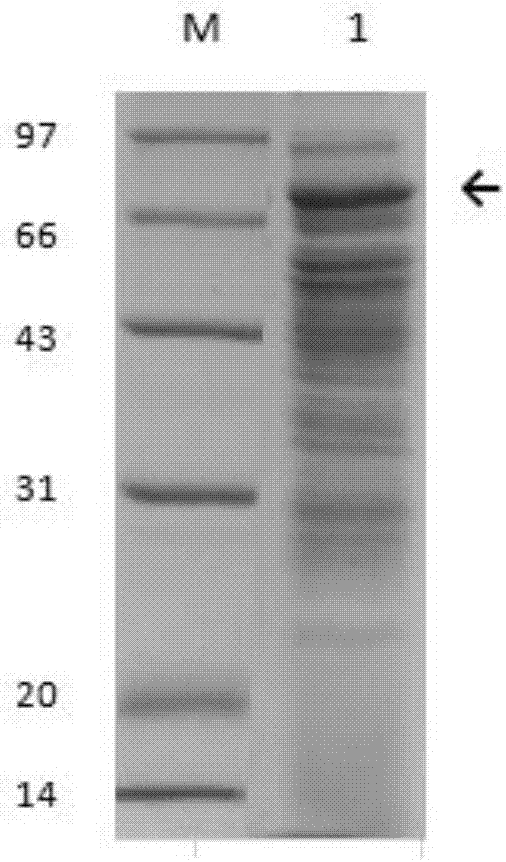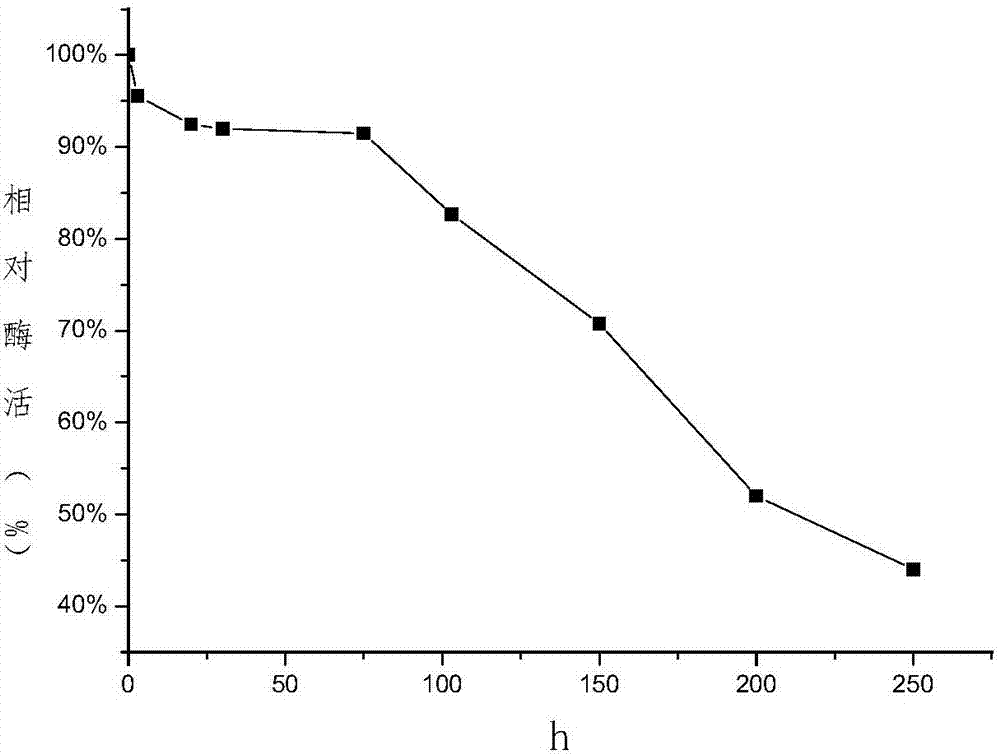Branching enzyme and application of branching enzyme for preparing resistant dextrin
A technology of resistant dextrin and branched enzymes, applied in the field of bioengineering, can solve the problems of restriction potential and low enzyme production capacity of natural strains
- Summary
- Abstract
- Description
- Claims
- Application Information
AI Technical Summary
Problems solved by technology
Method used
Image
Examples
Embodiment 1
[0040] Embodiment 1: the construction of genetically engineered bacteria
[0041] 1. Design a pair of primers P1 and P2 according to the gene sequence of Tfu_0582 (Genbank accession number NC_007333.1:663757-666006). The underlines are the enzyme cutting sites Nde Ⅰ and Hind Ⅲ,
[0042] P1: 5'-C CATATG ACCGCCCGGCCTGCAGT-3'
[0043] P2: 5'-C AAGCTT TCACGTCCCGTCGAACACCAGC-3'
[0044] Using the total DNA of Thermuobifidafusca WSH03-11 (published in 2008, in a paper titled Identification and characterization of bacterial cutinase) as a template, and using P1 and P2 as primers, PCR amplified the gene encoding the branching enzyme (Genbank accession number NC_007333.1: 663757 -666006), then cloned into the pMD18-T simple vector (commercialized tool vector), the ligation product was transformed into Escherichia coli JM109, and the transformation product was coated with an LB plate containing 100 mg / L ampicillin. After culturing overnight at 37°C, colonies were selected and inser...
Embodiment 2
[0047] Embodiment 2: fermentation produces branching enzyme
[0048] 1. Transfer the glycerol tube strain to LB medium for 37°C liquid culture overnight, and then insert it into TB fermentation liquid medium (glycerol 5g / L, peptone 12g / L, yeast extract 24g / L, K 2 HPO 4 12.54g / L, KH 2 PO 4 2.31g / L), cultured at 37℃ to OD 600 After reaching 0.6, induce with a final concentration of 0.12-0.2mm / L isopropylthio-β-D-galactoside (IPTG), then transfer to 25°C for 48 hours, centrifuge the bacteria, and use pH 6.5 0.05mol / L Cells were suspended in sodium phosphate buffer, ultrasonically disrupted, and centrifuged to measure the branching enzyme activity in the supernatant. The fermentation activity of the recombinant branching enzyme reached 2500 U / mL, and the SDS-PAGE electrophoresis of the recombinant branching enzyme protein was shown in figure 1 .
[0049] Using amylose as the substrate, the enzyme activity was measured at different temperatures, and the results showed that t...
Embodiment 3
[0050] Example 3: Application of starch branching enzyme in the preparation of resistant dextrin
[0051] Taking starch as a substrate, adding 5% 1mol / L HCl solution to the starch, and then performing high-temperature reaction at 160-200°C, the resistant components are 40%-45% after cooling and sieving. After high-temperature acid hydrolysis, the substrate concentration of 200g / L-300g / L was prepared for enzyme conversion at different temperatures. The temperature of enzyme conversion was 35-45°C, and enzyme conversion was carried out under different pH conditions. The pH of enzyme conversion was found. The efficiency is higher in 6-7, and the amount of enzyme added and the reaction time of enzyme conversion are detected, and the amount of enzyme added is 1000-1500U / g, and the reaction time of enzyme conversion is 8-12h, and the content of resistant dextrin reaches 60%. , increased by more than 10% after higher temperature acid hydrolysis.
[0052] The obtained resistant dextr...
PUM
 Login to View More
Login to View More Abstract
Description
Claims
Application Information
 Login to View More
Login to View More - R&D
- Intellectual Property
- Life Sciences
- Materials
- Tech Scout
- Unparalleled Data Quality
- Higher Quality Content
- 60% Fewer Hallucinations
Browse by: Latest US Patents, China's latest patents, Technical Efficacy Thesaurus, Application Domain, Technology Topic, Popular Technical Reports.
© 2025 PatSnap. All rights reserved.Legal|Privacy policy|Modern Slavery Act Transparency Statement|Sitemap|About US| Contact US: help@patsnap.com



